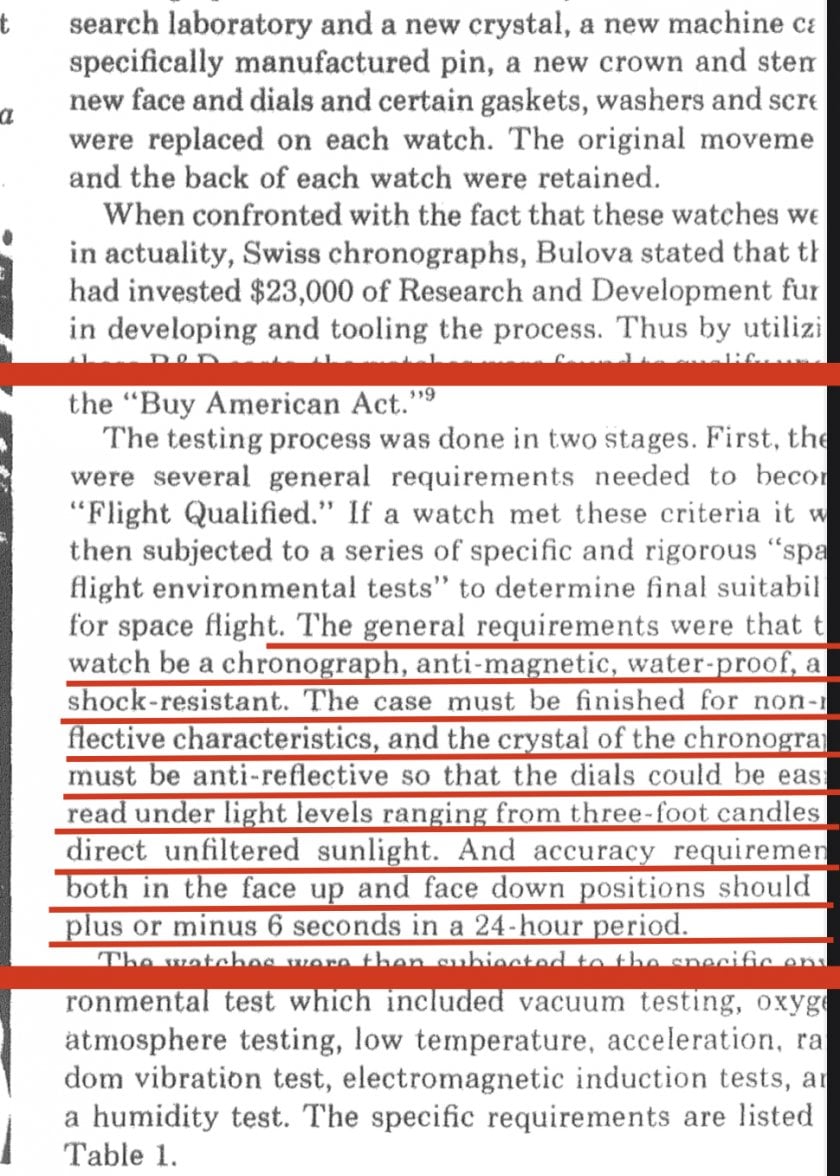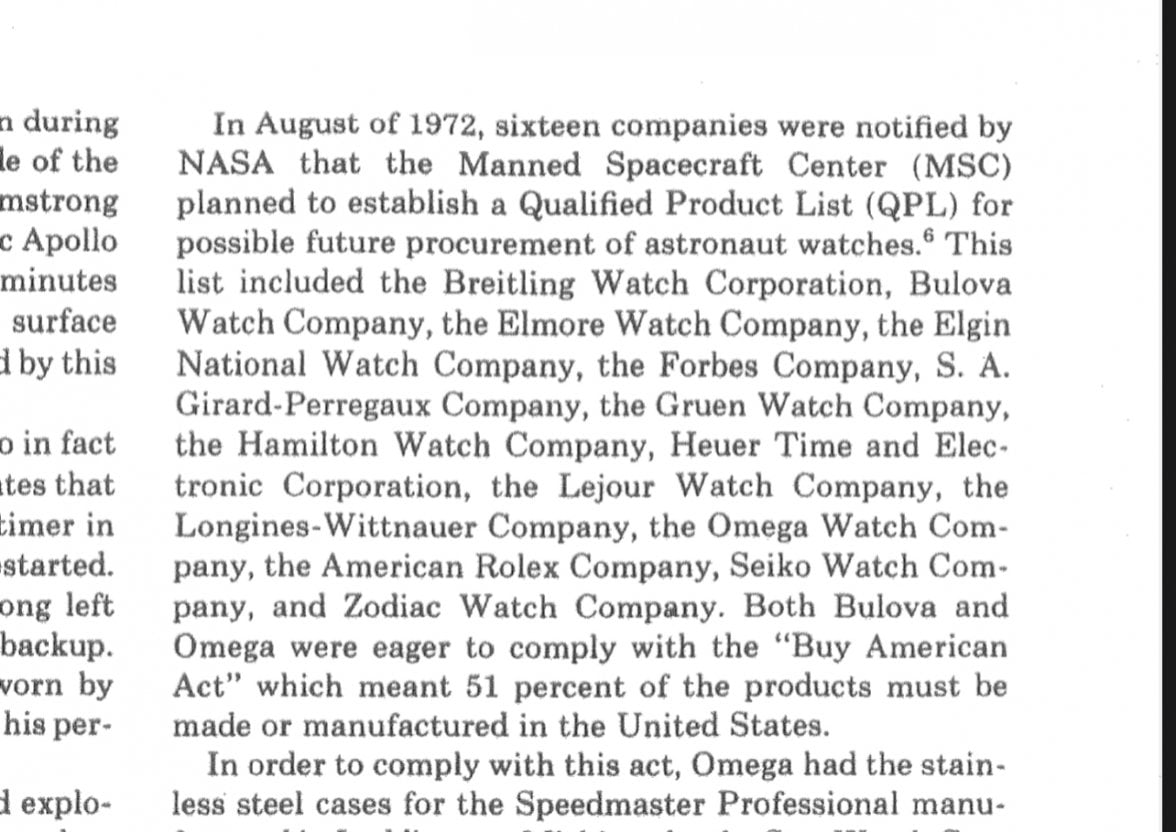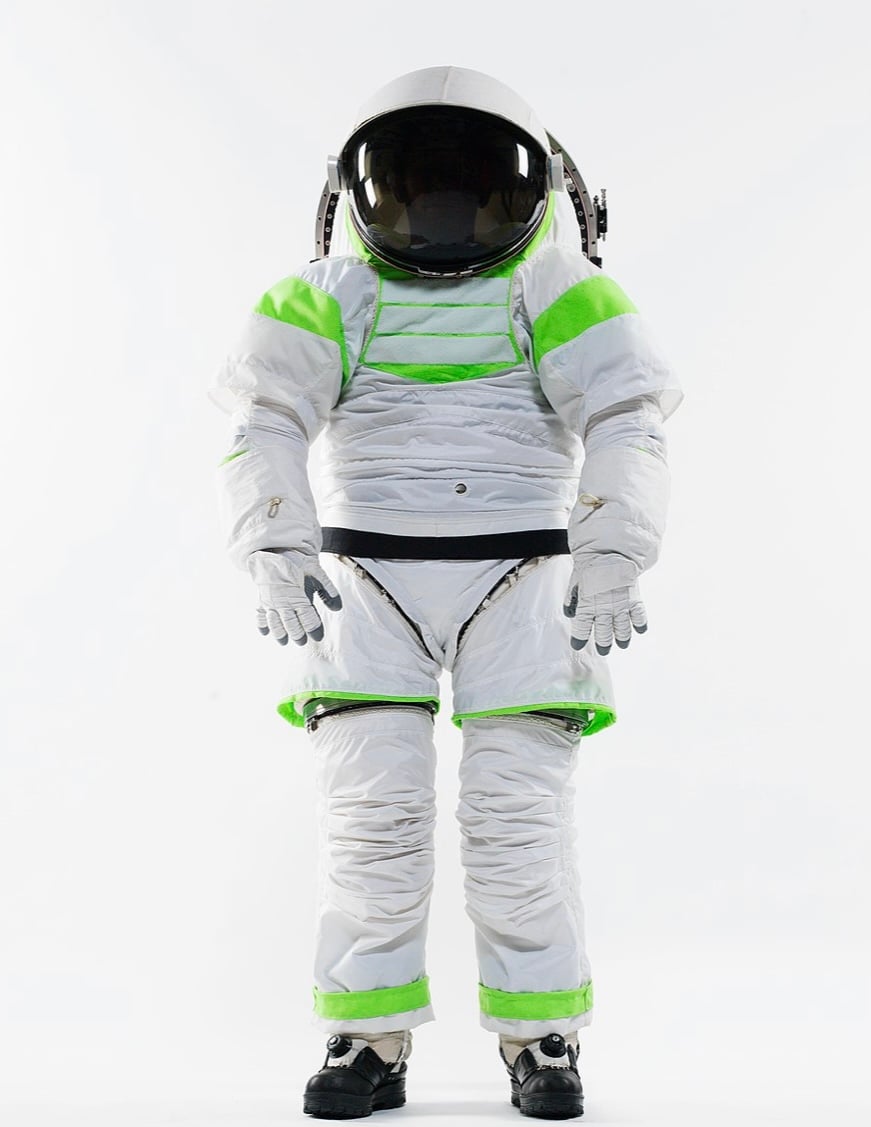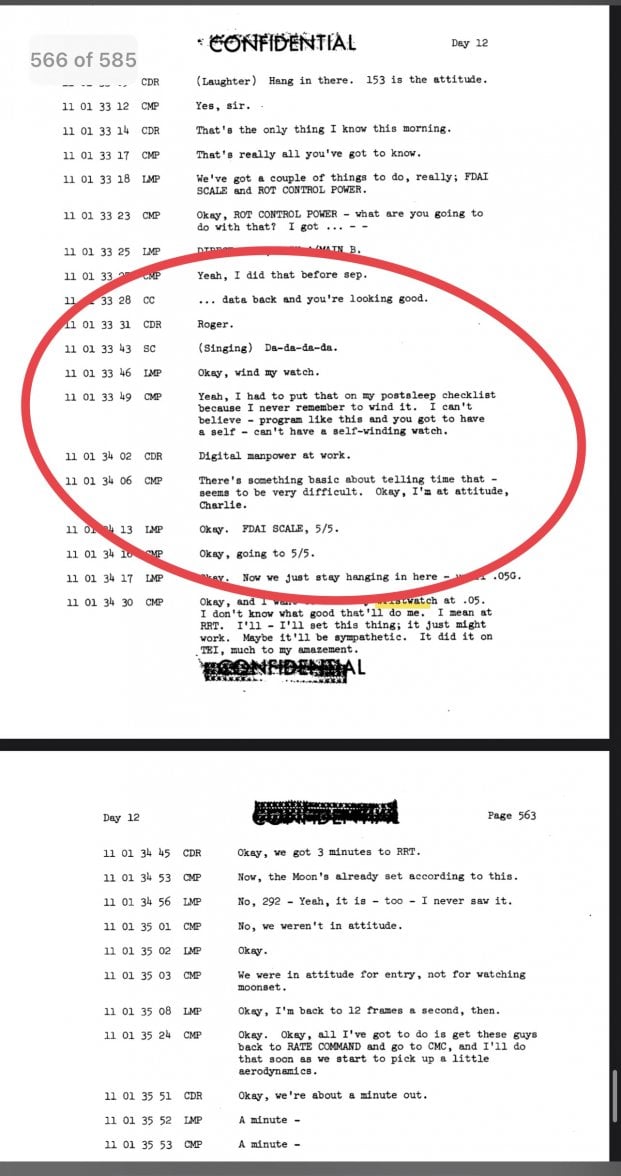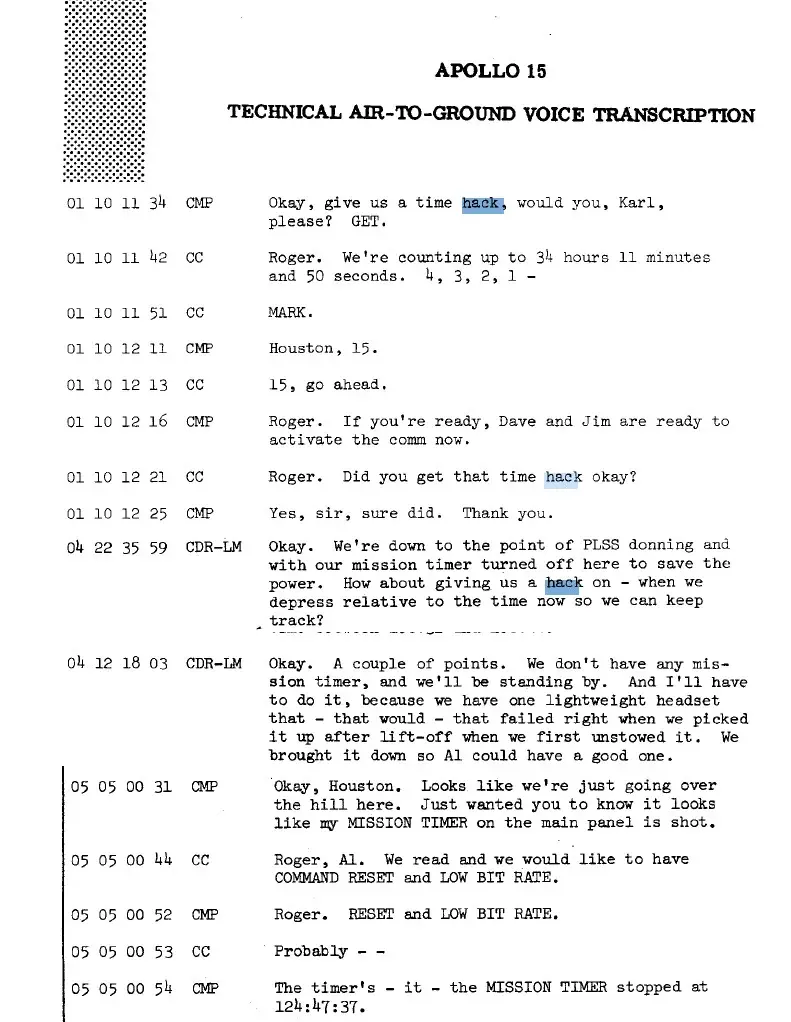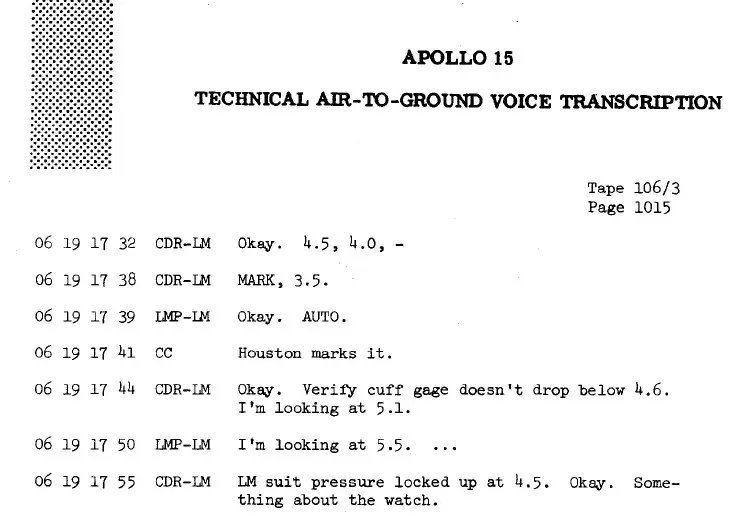cvalue13
·In the 1993 Alan Nelson paper, he recounts but without citation the 1972 Statement of Specifications. It’s a bit frustrating the absence of citation, because the paper is otherwise associated with 90 pages of cited period correspondence surrounding the controversy with Bulova.
Until the 1972 “Request for Quote” itself is found, Nelson’s recounting seems the best we’ve got for the ‘72 SOS:
Reviewing this - in particular the requirement that the crystal be anti-reflective - I’m left wondering: when did anti-reflective coatings for sapphire crystals became prevalent?
Meanwhile, perhaps the gating issue is instead: how many of the following companies were producing a chronograph with a sapphire crystal in ~1971-1972 (much less one with an anti-reflective coating)?
Nelson’s paper does list and provide source materials for the companies that received the RFQ in ‘72
So regarding that requalification in ‘72, the SOS question is really: did any of these companies have a chronograph with sapphire crystal, much less an anti-reflective coating (assuming, without basis, that all 16 companies responded - which is unlikely).
Later in ‘78, prompted by Bulova in connection with the shuttle missions, NASA requalified again but testing only Bulova and Omega watches (this is the test for which Omega sent 3 models). The correspondence doesn’t specify the crystal type of the submitted Bulovas.
Have there been any requalifications since 1978?
If not, then:
• In 1962, the SOS required a “shatterproof” crystal (while if any alternative companies offered a chronograph with a non-acrylic crystal, it was perhaps more likely a mineral crystal notorious for ‘shattering?)
• In 1972, the SOS required the crystal be “anti-reflective” (while if any alternative companies offered a chronograph with a sapphire crystal at all, would it have had anti-reflective coating? Perhaps exploring the catalogues of the other 15 makers would shed light - assuming without basis they all responded).
• In 1978, the SOS is unknown still, but only Bulova was tested (with the crystal material of Bulova’s submissions unknown) - and the Bulovas performed poorly
In all, while an acrylic crystal was in ‘62 specified (by the “shatterproof”), thereafter seems possible that acrylic stuck by default.
Until the 1972 “Request for Quote” itself is found, Nelson’s recounting seems the best we’ve got for the ‘72 SOS:
Reviewing this - in particular the requirement that the crystal be anti-reflective - I’m left wondering: when did anti-reflective coatings for sapphire crystals became prevalent?
Meanwhile, perhaps the gating issue is instead: how many of the following companies were producing a chronograph with a sapphire crystal in ~1971-1972 (much less one with an anti-reflective coating)?
Nelson’s paper does list and provide source materials for the companies that received the RFQ in ‘72
So regarding that requalification in ‘72, the SOS question is really: did any of these companies have a chronograph with sapphire crystal, much less an anti-reflective coating (assuming, without basis, that all 16 companies responded - which is unlikely).
Later in ‘78, prompted by Bulova in connection with the shuttle missions, NASA requalified again but testing only Bulova and Omega watches (this is the test for which Omega sent 3 models). The correspondence doesn’t specify the crystal type of the submitted Bulovas.
Have there been any requalifications since 1978?
If not, then:
• In 1962, the SOS required a “shatterproof” crystal (while if any alternative companies offered a chronograph with a non-acrylic crystal, it was perhaps more likely a mineral crystal notorious for ‘shattering?)
• In 1972, the SOS required the crystal be “anti-reflective” (while if any alternative companies offered a chronograph with a sapphire crystal at all, would it have had anti-reflective coating? Perhaps exploring the catalogues of the other 15 makers would shed light - assuming without basis they all responded).
• In 1978, the SOS is unknown still, but only Bulova was tested (with the crystal material of Bulova’s submissions unknown) - and the Bulovas performed poorly
In all, while an acrylic crystal was in ‘62 specified (by the “shatterproof”), thereafter seems possible that acrylic stuck by default.
Edited:
